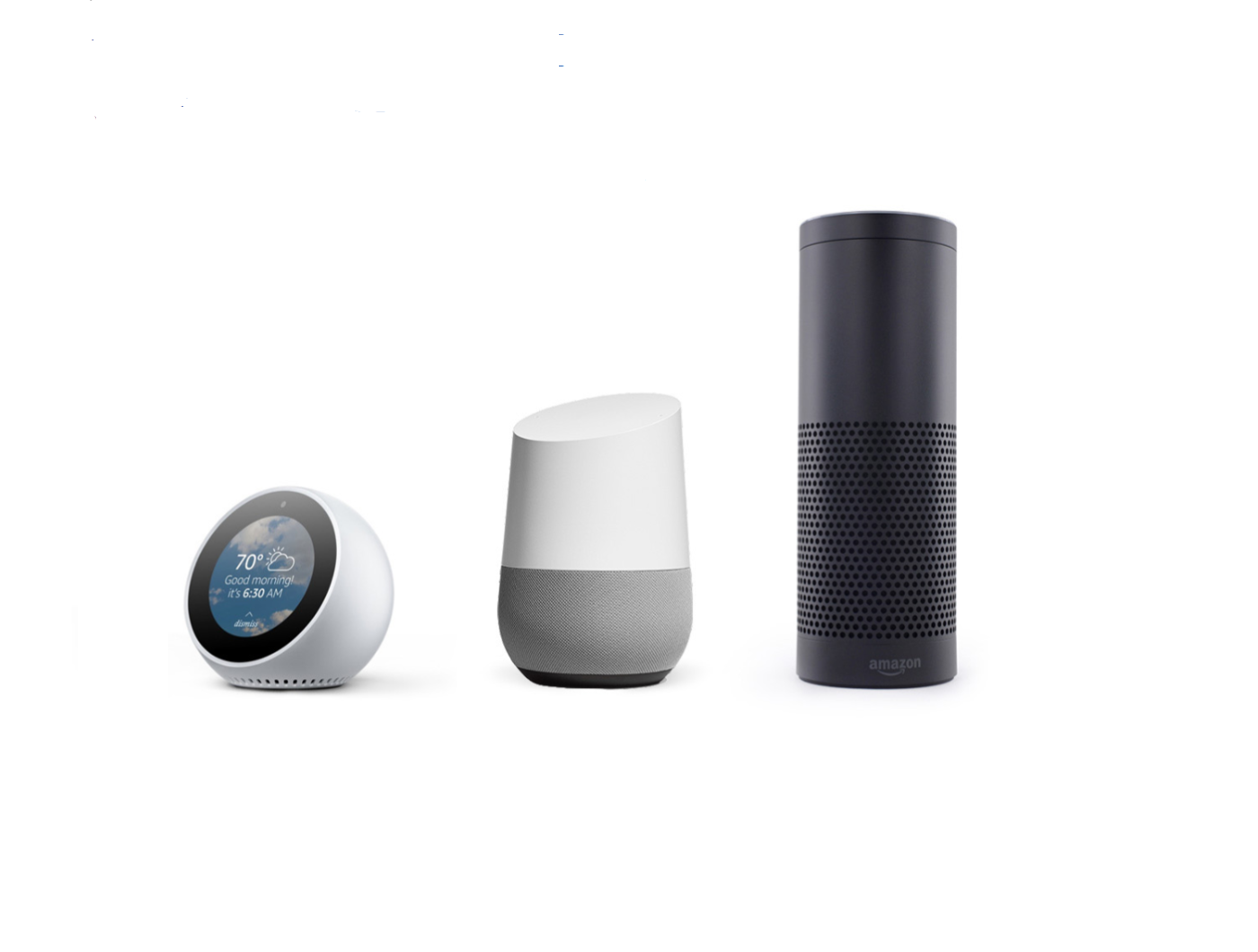NPR Steps Up Its Smart Speaker Game for Audiences and Sponsors

Four years ago, the promise of smart speakers was exciting, but the voice assistant tech that powered them was still nascent and offered a clunky, inconsistent user experience. As more consumer research has surfaced, the tech is slowly changing and enabling a new wave of design and experimentation from organizations like NPR, which just last month released its latest smart speaker offering, the "Wait Wait Quiz." Based on NPR's popular podcast, "Wait Wait…Don't Tell Me!," the interactive quiz challenges the audience's knowledge of news and quirky headlines and reflects NPR's commitment to creating content native to voice-activated devices. It's also a show of National Public Media's (NPM) commitment to supporting NPR sponsors entering the voice ecosystem with innovative sponsorships that capitalize on the devices' interactive capabilities and NPR's growing reach on the platform.
Smart speaker sales and usage are booming. According to the Smart Audio Report from NPR and Edison Research, 53 million American adults 18+ owned a smart speaker as of January 2019 -- including 14 million new owners last year alone -- with more than half owning multiple speakers. New data from Triton Digital finds that the portion of online radio listening on smart speakers has more than doubled since January 2018, contributing to an overall 4% increase in time spent with AM/FM radio streams. As these devices push into mainstream use, audio publishers, brands and advertisers are stepping up their game.
MediaVillage interviewed NPM's COO Bryan Moffett and NPR's Senior Product Manager for Emerging Platforms Ha-Hoa Hamano about the ingredients of a good smart speaker experience, how NPM is involving sponsors in voice and why traditional commercial radio ads don't work well on smart speakers.
Alli Romano: What does your research show you about the types of content smart speaker owners want from audio companies?
Ha-Hoa Hamano: We see dayparting as a big thing. In the morning, we see great engagement in our short, quick and timely newscasts. In the afternoons and evenings, there is an appetite for longer-form content. We're trying to fold that into the way we deliver the content through some of our personalized listening experiences, such as NPR One. We're really focused on getting the right content to the right people. We want to get longer stories in front of the folks that want to hear longer stories and podcasts. For the news hounds, we want to still give them news if that's what they want in the evening.
Romano: How much do you find people are starting to engage directly through speakers' [native features] or through their smartphone [via Bluetooth]? Does it make a difference from a publisher's perspective how users access content on the speaker?
Hamano: When you're accessing content from the smart speaker using the native features, there are a lot of opportunities to signal that you want more listening or context. It's more dynamic. NPR can serve you the hourly newscast ... and then we can serve you a follow-up piece. If it's first thing in the morning when you listen, things may have changed since you last tuned in and we'll happily give you the follow-up piece there. The platform allows you to dive into the other, deeper stories, to change course. If you're just casting audio from another device and playing it through the speaker, it's not as natural or native to the platform to on-ramp to other content.
Romano: Advertisers are watching with a lot of interest. How are you working with brands to develop sponsorships for voice?
Bryan Moffett: NPR launched voice-activated sponsorships in mobile apps back in 2014. Fast-forward to 2017; the very first sponsor messages on smart speakers were similar to the sponsor messaging formats NPR audiences are already accustomed to hearing. They were broadcast credits in live station streams, mid-rolls in podcast episodes and post-roll on NPR's new flash briefing offerings.
As the audience on this platform has grown and become more comfortable using voice activation, and the technology has developed, we've rolled out native offerings that leverage the platform's interactive nature. Most recently, we began building voice landing pages, where audiences can choose to dive deeper into an audio content experience from one of our sponsors on an Amazon Alexa or Google Assistant device after they hear a prompt in a post-roll.
The voice landing pages are very new. We've done them with Lagunitas and Target -- those two have run already -- and we have a few others in production that we are excited to launch soon.
Romano: In your early experience, what's most effective? Is it treating voice sponsorship the same way you do on-air? Like the "Wait Wait Quiz" was brought to me by Capital One, and there was a short, standard sponsor message from them at the end of the quiz. Or are you finding ways to really take advantage of voice and allow your brand partners to get listeners to engage deeper?
Moffett: On the radio and across platforms, NPR sponsor messages have always been conversational and non-commercial. We've found that style works best on these [voice assistant] platforms. Our Smart Audio Report survey shows public radio-style sponsor announcements are among the most preferred brand messaging formats on smart speakers. Because people are turning to the smart speaker to make their lives easier and more efficient, it's important for brands to consider how they can be conversational, useful and informative, rather than just purely marketing.
When it comes to voice landing pages, length matters. We're seeing strong completion rates. Well over half of the people who start one of these stories will get all the way through it. That's pretty good engagement for any sponsor or advertiser.
Hamano: I think what's exciting about [NPR and NPM] working together is that it's the user experience first-fold on both content and sponsorship. I think when publishers do go into this experience and think to tack it on at the end, you can tell. It's not natural and it's not really optimizing for the whole experience. So, as a product team, we work closely with Bryan's team to make sure that the user needs and trust are met first and foremost.
Romano: How do screened smart speaker devices play into your strategy for content and sponsorship? If I was to play the "Wait Wait Quiz" on a device with a screen would I get a graphical piece?
Hamano: You do. Moving forward, we're trying to make sure to keep that in mind. So, for the [Echo] Spot, as challenging as it is, we do have a visual experience. Same for our visual newscast. We format our visuals so that it still makes sense on that little screen but it also looks great on the show, the Fire TV Cube and Google devices.
Moffett: In terms of sponsorship, the 15-second post-roll on screened devices will also have a visual aspect. It's not a video and I think that's really important because I don't think the audience is expecting to see a TV commercial there. They certainly aren't looking to see video content per se. They're looking for something that helps augment the audio experience and gives them a visual component.
Romano: Where do you see this space headed in the next year to 24 months? What's in your crystal ball?
Hamano: The early adopters of voice assistants brushed off how clunky some of the commands were and how there was a little bit of disconnect in the experience. Now that these devices are entering into the mainstream, it is going to push the platforms and content creators to make the experience more natural.
Moffett: The Smart Audio report said that 52% of people use their smart speakers daily and they tend to use the voice assistant on their phones more, too. If I looked down the road a year or two, I think the tendency to want voice assistants everywhere, to use them to control all aspects of your life, is going to accelerate very quickly because once it works well enough, you'll use that. As you get into the interactive experiences and people want to go deeper, for brands to be a part of that, they have to be conversational and additive.
Click the social buttons above or below to share this story with your friends and colleagues.
The opinions and points of view expressed in this content are exclusively the views of the author and/or subject(s) and do not necessarily represent the views of MediaVillage.com/MyersBizNet, Inc. management or associated writers.


